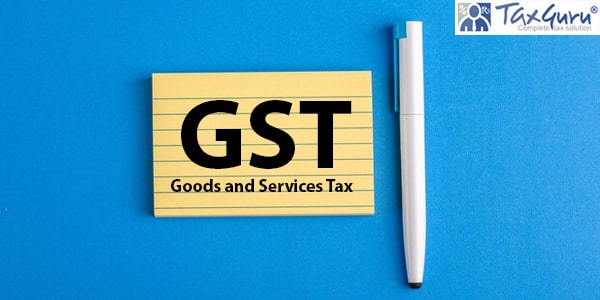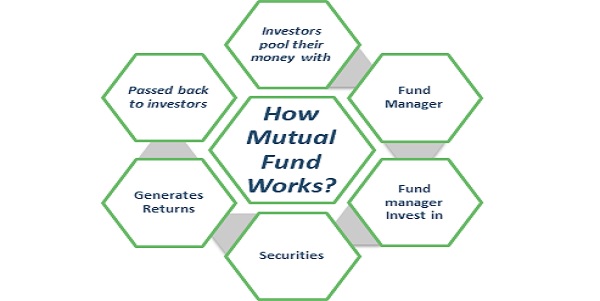Contradiction in Intention and Implementation After Amendments in section 11 of income tax act, 1961
Contradiction in Intention and Implementation After Amendments in section 11 of income tax act, 1961
As we all aware that, to control cash economy, various measures are announced by Financed Act, 2018. One of that measure is amendment in section 11 of Income tax Act, 1961. This article cover the actual rational behind introducing this amendment, current implementation of this amendment in market and also some suggestions for improvising this section further.
Following is the actual paragraph from Budget speech:
Para 154 of his budget speech as follows:
“Currently, the income of trusts and institutions is exempt if they utilise their income towards their objects in accordance with the relevant provisions of the Income-tax Act. However, there is no restriction on these entities for incurring expenditure in cash. In order to have audit trail of the expenses incurred by these entities, it is proposed that payments exceeding Rs. 10,000/- in cash made by such entities shall be disallowed and the same shall be subject to tax. Further, in order to improve TDS compliance by these entities, I propose to provide that in case of non-deduction of tax, 30% of the amount shall be disallowed and the same shall be taxed.”
Accordingly in The Finance Bill, 2018, under Chapter III, Direct Taxes – Income Tax, an amendment under section 11 is introduced as under:
“6. In section 11 of the Income-Tax Act, in sub-section (1), after Explanation 2 [as inserted by section 11 of the Finance Act, 2017], the following Explanation shall be inserted with effect from the 1st day of April, 2019, namely;-
‘Explanation 3.- For the purpose of determining the amount of application under clause (a) or clause (b), the provisions of sub-clause (ia) of clause (a) of section 40 and sub-sections (3) and (3A) of section 40A, shall, mutatis mutandis, apply as they apply in computing the income chargeable under the head “Profit and gains of business or profession”‘.
If any one looks the above, will honestly assume that if any trust or institution who incurs expenditure in cash in excess of Rs.10,000/-, the same shall be disallowed and a tax at the rate of 30% (for convenience purpose cess etc is not included here) needs to be paid on such disallowance which is equalling Rs.3000/- . Likewise, if any person fails to deduct Tax on expenditures say on Rs.1,00,000/- , then the same shall be disallowed @30% which is equalling to Rs.30,000/- and accordingly they need to shall out an amount of Rs.9000/- as tax, being 30% on Rs.30,000/-.
If you think the above sounds logical, then you are wrong. Let’s see how the law makers makes a contradiction when comes to implementation of their intention.
Till date, during the assessments of trusts or other institutions who claim exemptions u/s 11 of the act, if the Assessing Officer (AO) finds any cash payments made in excess of the limits prescribed under section 40A(3) or 40A(3A) of the act or notices that a huge sum was paid for construction of a building without effecting TDS, then the AO can do nothing except seeing the violations which are otherwise disallowed in computation of profit or from business or profession as sections 40A(3) or 40A(3A) or disallowances for non-deduction of TDS u/s 40a(ia) shall have no effect on the above situations as the income of the trusts or other institutions are computed as per section 11 of the act and not as per sections 30 to 36 of the act.
Naturally, the lawmakers might have thought that this anomaly should be set right and accordingly brought the above amendments.
But let’s see how the amendment is implemented through an example:
Say Trust by name ‘LT’ ( Lucky trust) had filed its return of income for the assessment year 2019-20 with a gross income of Rs.1,00,00,000/- ( Rupees one crore) and had spent around Rs.95 lakhs including revenue and capital expenditure towards the objects for the said assessment year. As the trust had spent more than 85% of its receipts ( i.e 85%*1 crore = 85 lakhs), its income is not taxable under section 11 of the act.
The said return of income is subsequently taken for scrutiny and during the assessment proceedings; the AO had notices that the said trust had spent an amount of Rs.8 lakhs in cash to a builder who had constructed a building for the trust. This attracts disallowance u/s 40A(3) as the said amounts were paid entirely in cash in excess of Rs.10,000/-. Accordingly, the AO proposes to use the new amendment brought in section 11 and proposed to collect tax of Rs.2.40 laksh ( i.e 30% on Rs.8 lakhs, disallowed u/s 40A(3)), but surprised to note that the trust is escaping the tax on disallowances as under:
| Total receipts | Rs.1,00,00,000 (A) | |
| Application of income | Rs.95,00,000 | |
| Less: Disallowances u/s 40A(3) | Rs. 8,00 000 | |
| Net Application after disallowance | Rs.87,00,000 (B) |
Computation of application of income = B/A*100 = 87%.
As the trust had still spent more than 85% of its income towards the objects, there is no tax liability. This is the story of trust “LT” and this is not the intention of the statute.
Let’s now see the fate of an another trust by name “ULT” (Un lucky Trust), which had filed its return of income for the same assessment year with the same receipts of Rs.1 crore and had spent an amount of Rs.88 Lakhs and had claimed exemption under section 11 as it had applied more than 85% of its receipts towards its objects.
The said return of income is subsequently taken for scrutiny and during the assessment proceedings; the AO had notices that the said trust had spent an amount of Rs.8 lakhs in cash to a builder who had constructed a building for the trust. This attracts disallowance u/s 40A(3) as the said amounts were paid entirely in cash in excess of Rs.10,000/-. Accordingly, the AO proposes to use the new amendment brought in section 11 and proposed to collect tax of Rs.2.40 lakhs (30% on Rs.8 lakhs, disallowed u/s 40A(3)), but surprised to note that the trust is paying more tax than estimated by him as under:
| Total receipts | Rs.1,00,00,000 (A) | |
| Application of income | Rs.88,00,000 | |
| Less: Disallowances u/s 40A(3) | Rs. 8,00 000 | |
| Net Application after disallowance | Rs. 80,00,000 (B) |
Computation of application of income = B/A*100 = 80%.
As the trust had spent only 80% of its receipts towards the objects, it loses the exemption u/s 11 and needs to pay tax on the entire surplus, which is also not the intention of the statute.
This anomaly needs to be set right by the law makers by introducing proper amendments/clarification through circulars etc.
Apart, as on today there is no column in ITR -7 to report such violations by the auditor and it is available only in Tax Audit reports. Furnishing Tax audit report may not be applicable to many of the trusts as they do not engage in business even though their income exceeds Rs.1 crore in many of the occasions. Hence appropriate modifications are also required in ITR-7.
In my experience, many of the charitable trusts, other than big institutions, do not follow the TDS provisions and also to certain extent violates section 40A(3). Now all of them needs to be very careful as otherwise they may end up in paying more tax than expected, which will have a dent on the charity amounts.
Contributed by CA S.Ravi, who can be reached through sravica@hotmail.com and info@sravica.com.
(Republished With Amendments)





















Sir, Thanks for your detailed explanation. Very informative.
Dear sir,
My self Prakash Gupta an executive cum finance officer in a reputed pvt. hospital governing under institutional trust.
In some cases when bill finalised for a patient, the refund amount is more than 10000/-. they need and request us for CASH refund. May we make refund in CASH more than 10000/-.
Although our patient wise accounting are separate but Our PAN number is same.
Good eye opener on the amendment. Hope it will be clarified to meet the desired results.
Nice presentation
Thank you sir for the comment
Correct analysis. If the purpose of the amendment was to DETER the trusts from making cash payments, the correct mode would have been tax the disallowed portion only at maximum rate of tax